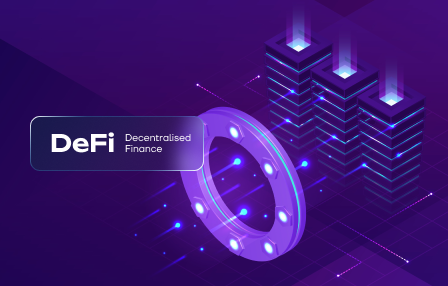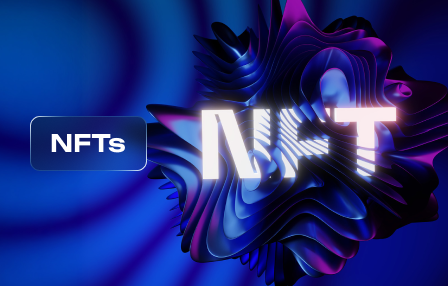How to Spot a Good Crypto Investment Opportunity
April 29, 2025
To spot lucrative investment opportunities in the crypto market, focus on emerging trends and perform thorough analysis of underlying technologies. Look for projects with innovative use cases that address real-world problems, as these often yield higher returns.
Evaluate market sentiment and community engagement around potential investments. Active communities can indicate strong support and momentum, reducing risk associated with price volatility. Utilize tools for tracking social media mentions and developer activity to gauge interest in specific cryptocurrencies.
Consider the timing of your investments; market cycles play a critical role in determining optimal entry points. Historical data suggests that investing during market corrections can enhance long-term return potential. Remain vigilant about regulatory changes that may impact project viability or market dynamics.
Finally, diversify your portfolio to mitigate risk while capitalizing on various opportunities within the crypto space. Balancing established assets with promising newcomers can provide stability and growth potential in a fluctuating market.
Analyzing Market Trends
Focus on identifying market trends by analyzing price movements and trading volumes. Tools such as moving averages and Relative Strength Index (RSI) can help spot potential entry points for investment. A good strategy involves observing both short-term fluctuations and long-term patterns, allowing you to gauge momentum effectively.
Consider the correlation between market sentiment and historical data. For instance, during bullish phases, altcoins often outperform Bitcoin. Analyzing these trends can reveal investment opportunities that yield high returns while managing risk effectively.
Regularly assess macroeconomic factors affecting the crypto market, including regulatory developments and technological advancements. These elements can significantly influence market behavior and create new opportunities for strategic investments.
Utilize social media sentiment analysis to gain insights into public perception of specific cryptocurrencies. Platforms like Twitter and Reddit often reflect immediate investor sentiment, which can act as an early indicator of potential price shifts.
Avoid overexposure to highly volatile assets without thorough analysis; diversification remains key in reducing risk. Identify promising projects with strong fundamentals that align with emerging trends, ensuring a balanced investment approach.
Evaluating Project Fundamentals
Assess project fundamentals by focusing on key indicators to spot good investment opportunities in crypto. Analyze the following aspects:
- Whitepaper: Review the project’s whitepaper for clarity on its purpose, technology, and use case. A well-structured document indicates serious intent.
- Team Background: Investigate the team’s experience and track record in the industry. Strong leadership often correlates with better project outcomes.
- Community Engagement: Evaluate community size and activity on platforms like Telegram, Discord, or Twitter. High engagement can signal trust and interest in the project.
- Tokenomics: Examine supply distribution, inflation rates, and utility of tokens within the ecosystem. Favor projects with sustainable models that minimize risk of devaluation.
- Partnerships: Identify strategic partnerships that enhance credibility and market reach. Collaborations with established entities can provide significant growth opportunities.
- Audit Reports: Check for third-party audits to ensure security practices are in place. Transparency in code is essential for mitigating risks associated with vulnerabilities.
This structured analysis will help in determining potential returns while minimizing risks inherent in crypto investments. Stay updated on trends to adjust your strategy accordingly.
Assessing Team Credentials
Evaluate the track records of team members to identify their experience in crypto and related sectors. Look for proven success in previous projects, particularly those that resulted in substantial market returns. Teams with backgrounds in finance, technology, or entrepreneurship often signal a higher potential for navigating the complexities of the crypto space effectively.
Scrutinize LinkedIn profiles and personal websites for insights into each member’s qualifications. Pay attention to their roles in prior ventures–successful startups or contributions to well-known blockchain projects can indicate a robust understanding of market dynamics and trends.
Investigate any partnerships or collaborations with established firms. These relationships can enhance credibility and open up opportunities for growth. A team connected to reputable organizations may possess better access to resources and networks necessary for project advancement.
Analyze community engagement and reputation within the crypto ecosystem. Active involvement in forums, conferences, or social media platforms suggests a commitment to transparency and communication–traits that are valuable for risk management. Assess how the team responds to community feedback; adaptability can be a strong indicator of future success.
Consider diversity within the team as well; varied skill sets contribute to comprehensive problem-solving approaches. A blend of technical expertise, marketing knowledge, and business acumen can significantly influence project outcomes and mitigate risks associated with market fluctuations.
Finally, keep an eye on any red flags such as lack of transparency or vague project descriptions. If key personnel are anonymous or have limited verifiable history, this could pose significant risks that outweigh potential returns on investment.
Understanding Tokenomics Models
Focus on analyzing the tokenomics model of a crypto project to identify good investment opportunities. A well-structured tokenomics model can indicate potential for return and market stability. Look for projects with deflationary mechanics, such as token burns, which can reduce supply and drive value appreciation over time.
Evaluate the distribution strategy of tokens. An equitable distribution ensures that no single entity controls a significant portion, reducing the risk of market manipulation. Projects that allocate tokens to early adopters, developers, and community members often create stronger ecosystems.
Pay attention to utility within the ecosystem. Tokens that serve clear purposes–like governance rights or access to services–tend to perform better in dynamic markets. Assess whether the token’s utility aligns with current trends and user needs.
Monitor vesting schedules for team and investor tokens; long vesting periods can mitigate risks associated with sudden sell-offs. Projects with transparent vesting timelines foster trust among investors, enhancing their position in fluctuating markets.
Lastly, conduct thorough analysis on token liquidity. High liquidity facilitates smoother transactions and reduces price volatility, making it easier for you to spot entry and exit points in your investment strategy.
Diversifying Investment Portfolio
To optimize your crypto investment strategy, incorporate diverse assets that align with market trends and risk profiles. A well-rounded portfolio can enhance potential returns while mitigating risks. Consider allocating funds across various sectors such as DeFi, NFTs, and layer-1 protocols.
Utilize the following table to identify potential allocation strategies based on asset categories:
This structure allows you to spot good investment opportunities across varying levels of volatility. Regular analysis of market trends will inform adjustments to these allocations, ensuring alignment with evolving dynamics. Maintain a focus on long-term growth while being prepared for short-term fluctuations.
Diversification not only spreads risk but also increases the likelihood of capitalizing on high-return investments within the crypto space. Stay informed about new developments to continuously refine your strategy.



